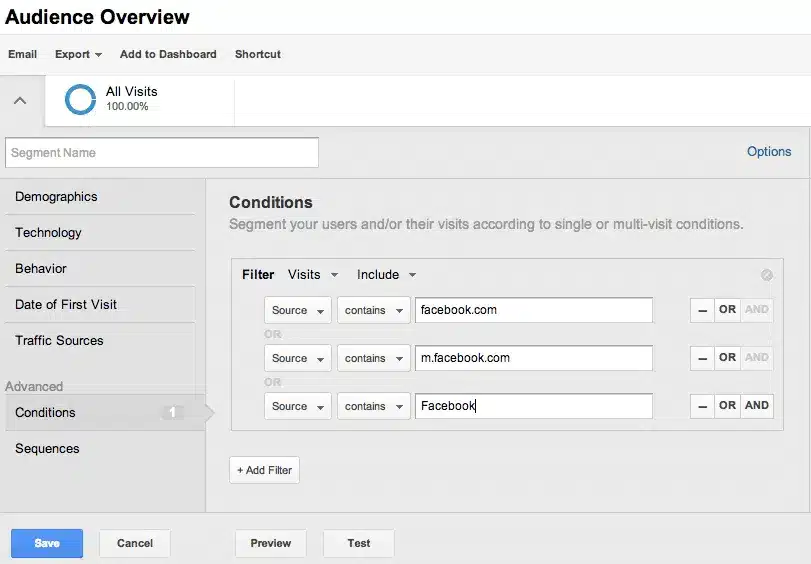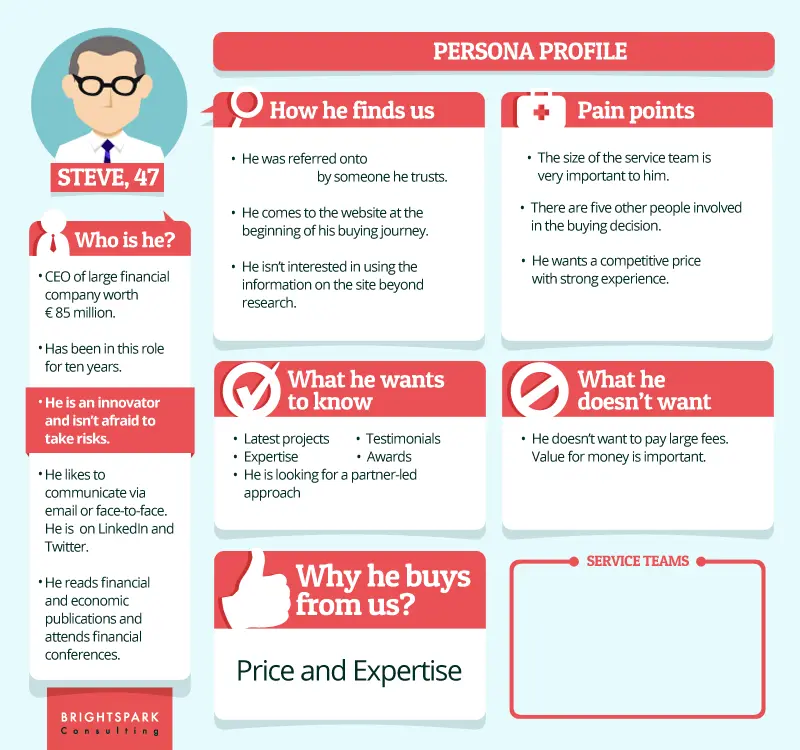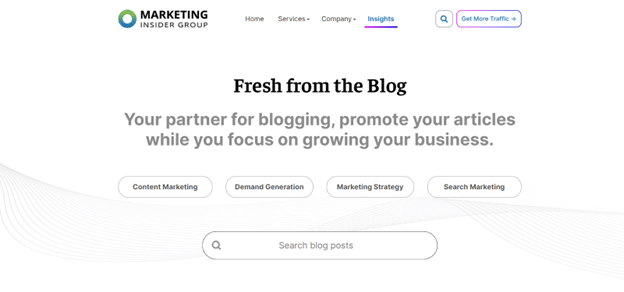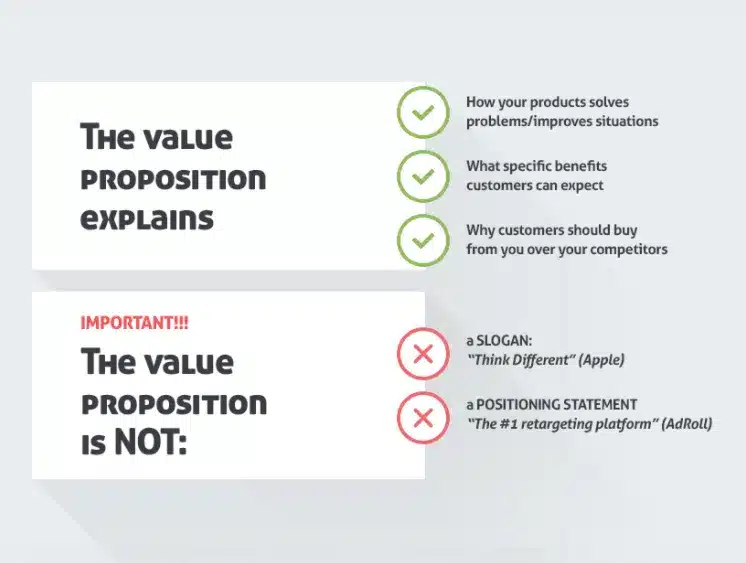
It’s probably no surprise to hear that marketers still report that generating leads and improving conversion rates remain top challenges. While you can do a lot to boost SEO and get people to your website, those efforts are pointless if you’re not converting website visitors to leads.
At Marketing Insider Group, we’ve used content marketing to drive a million yearly page views to our site and repeat that success with our many clients. So, what do we do with that traffic once we get it?
Learn how MIG and other successful marketers use lead generation funnels for converting website visitors into engaged leads.

Key Takeaways:
- Know your audience and tailor your content marketing efforts to them.
- Great buyer personas are concise and realistic to help you convert leads.
- Pop-ups can work if you use them correctly, and a simple website layout boosts conversions.
- Your calls to action and unique value proposition should fit your audience.
- Don’t forget to follow up with visitors by email.
1. Start Converting Website Visitors to Leads by Learning About Your Current Audience Analytics
Begin by collecting data on who you’re already attracting. Then you can figure out how to tailor your pages toward converting more website visitors to leads.
Google Analytics is a good start. With the Audience Overview feature, you can find out general information about who is visiting and how often.

However, GA alone only gives you a general understanding of who’s landing on your pages. Use additional martech tools to figure out more specific details.
For example, a reverse IP address finder can help you discover which companies are coming to your site or a visitor’s location for geo-targeting. This tactic is particularly useful for B2B sellers.
2. Create Excellent Buyer Personas
More than ever, the modern sales market is about understanding your clients, what they really need, and what they want to hear. It’s no longer just about having a great product and talking it up.
Figure out who your ideal customer is and create buyer personas that exemplify a realistic portrayal. In particular, consider their pain points and what they want to hear from you to address those challenges that they face.
Brightspark Consulting hits the nail on the head with the example below:

Don’t stop at one generic persona, however. Optimally, you’ll have at least two or three.
Continue to improve those personas as you pay attention to your people and which content is converting website visitors to leads. Then, segment those personas to start creating distinct funnels for each persona.
3. Attract Your Ideal Customers With Proper Keyword Targeting
Now, you can audit your SEO strategy to see if it’s effective. You may discover that you’re targeting the wrong keywords.
For example, your keywords should be appropriate for your field but not too broad. If you target the most common phrases with lots of competition, you’ll never break through.
Try focusing on long-tail keywords. These phrases are crucial because they help you attract leads that are at the bottom of the funnel.
To illustrate: “Customer relationship management” and “CRM” are broad keywords that would have a hard time beating top brands. “Easiest CRM to use” or “best CRM for translation agencies” are long-tail keywords that help you focus on a specific audience.
“How to purchase CRM” or “cheapest CRM” targets buyers who are ready to spend money. Pay close attention to your keyword strategy to start converting website visitors to leads.
4. Deploy Exit Intent Pop-Ups
Most people have multiple tabs open and are multitasking religiously. How can you keep attention when the mouse starts to hover away or pique interest when a visitor comes back to your page?
Exit-intent pop-ups trigger as soon as the mouse floats off of your web page. These have become more popular, so opt for bold images and concise messaging that grab attention.

Your pop-up could:
- Offer a discount or lead magnet
- Request an email address
- Ask a few survey questions
- Display a humorous CTA that gets to the point
- Remind a visitor to complete the checkout process
An effective tactic in B2C is gamifying your pop-ups. For instance, you can have the visitor spin a wheel for a random discount.
In B2B, you’re better off sharing something that provides more information, a demo, or a geo-targeted offer. A countdown clock that puts a limited time on a coupon or discount might be another way of converting website visitors to leads.
5. Simplify the Flow of Your Website
In an effort to prove your thought leadership, you might start to make your site look like a vast library with a complicated card catalog system. On the contrary, you need to make it easy for your target audience to find what they need and move through the funnel.
You don’t need to be too colorful or have too many items on a page. Keep it simple, especially since most people are browsing on mobile. Learn a little about user experience essentials and upgrade every so often to improve your site.
You may have noticed that we do that here at MIG. When you go to our Insights page, you can check out our most recent posts or navigate to one of our four main areas of expertise:
- Content marketing (of course!)
- Demand generation
- Marketing strategy
- Search marketing

We highlight the top posts in these categories — the ones that are getting the best response online and have the most value for all readers.
Now, check out the bottom or sidebar of this page or any other blog post. You’ll find related articles on the same subject that allows a reader to dig deeper.
Do you see how easy it is? It’s simple for our target demos to find what they need, which is why we keep converting website visitors to leads.
6. Consider Using Live Chat
While artificial intelligence should not be writing your blog articles and business contracts, there are things the bots are good for. One is a responsive live chat that can answer basic low-level inquiries.
A response to specific questions gets visitors engaging with your brand because you’re providing instant customer service. Set up a live chat in a way that helps you collect more information by making tailored offers and responses that feel more personal and human to the user.
7. Use Longer Lead Forms in the Right Places
Requesting too much information too soon can quickly run people off. However, when someone has a real interest in learning more and is ready to buy, they’ll willingly submit their (real) email address and more about themselves.
A/B testing can help you figure out how many fields your lead forms need and the tipping point at which prospects drop off. The more info you can get, the better you can segment leads and provide tailored experiences that keep converting website visitors to leads.
Your top lead magnets for bottom-of-the-funnel buyers should prevent users from submitting these forms with empty fields. You can also take steps to prevent users from submitting phony information.
For instance, B2B companies can ensure they’re getting sincere requests by rejecting free email domains (like Gmail, Yahoo!, and Hotmail) and only accepting company domains. Also, you should email lead magnets instead of letting the viewer open it up there on the page or offering an immediate download.
8. Optimize Your Calls to Action
Your CTAs are where you definitely need to be converting website visitors to leads. Instead of using the same generic CTA everywhere, make sure they fit the funnel the current reader is in.
Here’s another example: Let’s say your company builds and remodels homes. In that case, posts and lead magnets that discuss picking floor plans or neighborhoods should use CTAs that encourage readers to talk to you about new home construction.
A blog section for remodeling could talk about meeting new building codes and upgrading decorations and color schemes. Those CTAs should fit that audience by encouraging them to discuss more about renovations.
Remember to keep CTAs brief and clear. Don’t get too cute and lose the message.
Furthermore, every visitor isn’t going to read your whole article, so put CTAs throughout your content where people will see them. Drop colorful buttons, a floating header or footer, and hyperlinks in places where a reader can engage or purchase when the urge strikes.
9. Improve Your Unique Value Proposition
If you’re just a commodity, your audience won’t see you as any different from your competitors. Position yourself as a standout by weaving a unique value proposition throughout your content and continue converting website visitors to leads.
That means your content needs to have personality as well. Do it with humor, class, or snark but give the people who are like you and will like you a concrete reason to engage.
Also, be crystal clear about what you can do. Use numbers to demonstrate the ROI you can deliver and give examples of companies you’ve helped to prove why your target audience should choose you.

10. Follow Up With Leads Using Targeted Pages and Emails
Once you’re succeeding at converting website visitors to leads and have acquired real email addresses, your next goal is to keep those conversations going.
High-Quality “Thank You” Pages
Go beyond a basic “Thank You” page in the next step of the funnel. Reveal even more about your business or services and continue providing solutions to the problems leads may be facing without being too overbearing.
Your end goal is to keep their attention while you still have it. You can sell a product here, ask them to set up a consultation call, or take a quiz to learn more about their underlying problems.
Continue this process in every step of your funnel. There’s no magic number for how many pages your funnel needs to be; just keep in mind that each one should share solution-based content to keep converting website visitors to leads.
There are several easy-to-use page builders for creating online sales funnels. Popular ones include Clickfunnels, Leadpages, and Kajabi, which make it easy for even a nontechie to build an entire sales funnel in just a few hours.
Email or SMS Marketing
Now that you have an email address or phone number, don’t abuse your privilege. Never spam by sending too many messages, overloading inboxes, or only asking for sales.
Email and SMS marketing is your chance to “wine and dine” your lead. Tell them stories about yourself or your business, share tips or secrets they can use, or invite them to a free webinar to showcase your expertise.
You can still send promotions and offers. However, if you only ever ask them to pull out their wallets, they’re likely to unsubscribe from your list, killing your chances of turning them into a customer.
Also, you should use emails and texts to gauge a lead’s engagement level. Those who open and click your messages are your most engaged prospects with a higher chance of converting to a sale, while everyone else has likely moved on and only merits an occasional message.
Use Content Marketing for Converting Website Visitors to Leads More Consistently
If you’re ready to start using powerful content marketing for converting website visitors to leads in greater numbers, talk to our team at MIG. You’ll discover how our SEO Blog Writing Service can help you earn high-quality leads for your business.


0 Commentaires